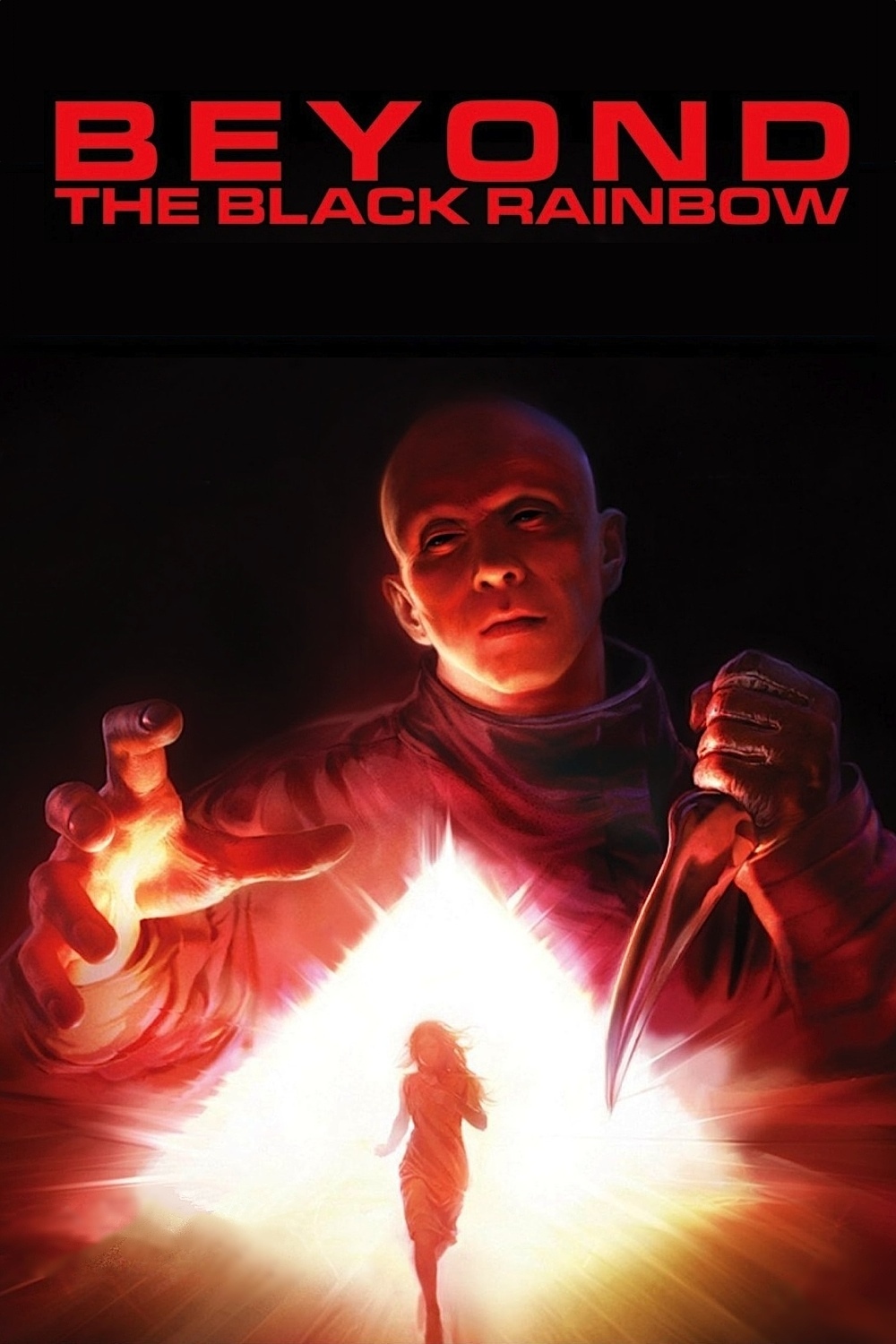Summary:
Under heavy sedation in the spiritual, new age / scientific Aboria Institue, young lady Elena tries to escape her obsessed captor.
My Thoughts:
Coming hot off the heels of watching another of Mr. Cosmatos’ films, the outstanding “Mandy”, I had high hopes for “Beyond the Black Rainbow,” or “BtBR.” Panos Cosmatos’ dreamlike and intensely artistic storytelling style appealed to me greatly in his second film, so it was with much eagerness I sat down to watch this film. But if “Mandy” could be described as the cinematic equivelant of dropping acid, “Beyond the Black Rainbow” is then more like a lethargic nightmare from which you cannot wake.
To say that the film moves at a glacial pace would be an insult to icebergs. Typically, I can handle a slower paced movie; indeed, “Mandy” didn’t exactly burn through it’s approximately two hours of run-time either. However, where “Mandy” was a bit more accessible in terms of story and motives, “BtBR” obfuscates much of the relationship between it’s characters. Perhaps that’s a me problem, but I can only tell you that things became much more clear to me once I read the Wikipedia entry that detailed more of the story.
“You are about to embark on a great journey. Are you ready, my friend?”
Cosmatos has said that he doesn’t neccesarily concern himself too much with deep storytelling through writing, rather he prefers to let the movie speak for itself in that regard. That said, we begin by learning a bit about the Arboria Institute, a quasi-futuristic asylum of sorts in which Dr. Barry Nyle, our antagonist, keeps a young woman by the name of Elena under lock and key. He often questions Elena during what appear to be counseling sessions, and it becomes clear that Elena is quite unresponsive and despondent to the whole affair. We learn that she also has some sort of ESP or telekenetic powers, which are dampened or cancelled out by technology within the institution.
During the course of the film, Elena is able to sneak out of her cell and journey into the depths of the building to hopefully find an escape route. It is at this time we learn just how obsessed with the young lady Dr. Nyle has become, setting out to find and return Elena to the institution. I won’t spoil it for any of you reading this, because without the story there is really only one other reason to watch “BtBR,” it’s visual style.
The one high point of this film for me was it’s fantastic visual style. From the hellish flashback sequence of Dr. Nyle Barry, to the sterilized and symmetrical environments of the institution, “BtBR” can be a feast for the eyes, even if the red and orange hues become stale after a while. These images can at times be hypnotic, surreal, and repulsive, often all at the same time. Reinforcing this “dream theme” is a notable score, heavy with textured synths and pleasing appreggios. I have to admit, I’m drawn to this type of synthesized music, so I may be biased in that particular assessment.
Unforunately the sum of it’s parts does not lead to a greater whole for me in regards to “Beyond the Black Rainbow.” I am not as invested in these characters, as spellbound by the cinematography, or enthralled by the story as I found myself to be in Cosmatos’ second film, “Mandy.” Is it unfair to judge a director’s work against his own work? Perhaps, but when you have two so similar films that are quite different in execution, I think it’s at least worth noting that there was room for improvement and improvement did occur.
Verdict:
I was hoping for another dreamlike adventure in filmmaking that was unlike anything I had ever seen in film before, and while the roots of who Panos Cosmatos is as a filmmaker are firmly planted in this film, it is clear that in “Beyond the Black Rainbow,” Cosmatos was still finding that balance between surreal visual aesthetic and simple but captivating storytelling. I cannot recommend this film, as a better one already exists in it’s place.
Review Written By:





